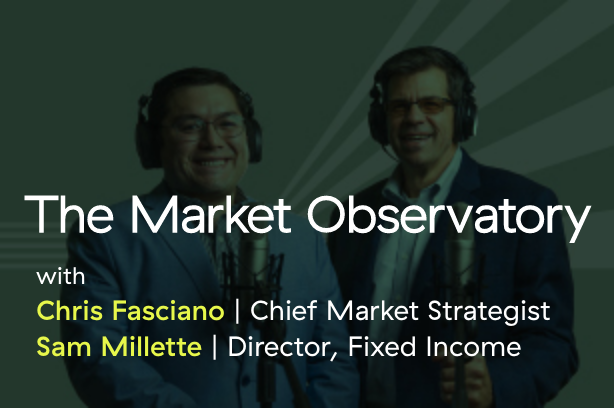My colleague Sam Millette, manager, fixed income on Commonwealth’s Investment Management and Research team, has helped me put together this month’s Economic Risk Factor Update. Thanks for the assist, Sam!

May 11, 2022
My colleague Sam Millette, manager, fixed income on Commonwealth’s Investment Management and Research team, has helped me put together this month’s Economic Risk Factor Update. Thanks for the assist, Sam!
May 10, 2022
Yesterday was another bad down day in the markets. Not only that, but other assets are getting hit as well, with bitcoin getting hit even more than the general financial markets. As worries rise, when will the bleeding stop?
May 6, 2022
Yesterday saw another significant drop in stock markets, more than reversing the bounce we saw the prior day. Up, down, up, down, but largely down—it looks like the market is headed down indefinitely.
One of the key things I do as an analyst is figure out what can be safely ignored. In today’s environment, with so many “different this time” events going on—the pandemic, the Ukraine war, and the 40-year high in inflation—what can we safely disregard? Finding the right answer is not as simple as it was a couple of years ago.
April was a hard month for the markets. For the month, U.S. markets were down between 5 percent for the Dow and 14 percent for the Nasdaq, and international markets fell between 5 percent and 7 percent. Fixed income was also down for the month—there was truly nowhere to hide.
May 3, 2022
April was one of the worst months for the markets since the start of the pandemic.U.S. markets were down between 5 percent for the Dow and 14 percent for the Nasdaq, while international markets fell between 5 percent and 7 percent. Rising interest rates drove the declines, with the Fed signaling it intended to keep tightening monetary policy. Still, the U.S. economic news was positive. Hiring remained strong, supporting consumer confidence, and business confidence and investment remained healthy.
April 29, 2022
Chalk another point up on the board for the importance of context. Yesterday’s economic data release showed that the economy actually shrank in the last quarter, down by 1.4 percent at an annual rate. This result was down from 6.9 percent in the prior quarter and well below the expected 1 percent growth rate.
April 28, 2022
This will be the last post on the 100K project because I finished it a couple of days ago, 364 days after I started. For those coming in fresh, the 100K project was a decision I made, 364 days ago, to start tracking my daily calorie balance—consumed less burned—over time. The goal was to get a net loss of 100,000 calories down, over an indefinite time period. You could think of it as taking 100,000 calories out of the fat bank.
April 27, 2022
Following up on yesterday’s post about the recent market declines, I thought it would make sense to talk not just about the declines themselves (where they came from and where they are going), but also about what the declines mean from a larger portfolio perspective. To take the emotion out of it for a bit, and see what the larger picture can tell us.
April 26, 2022
The economy seems to be doing well, with job growth still at high levels, consumer spending still healthy, and businesses continuing to invest. But the stock market—which is supposedly a barometer of that economy—is acting very differently. The market has fallen significantly from its peak at the start of the year and, more recently, has taken a sharper drop. What’s going on here, and will it continue?

Episode 13
November 19, 2025
Episode 12
October 14, 2025
Episode 11
September 10, 2025
Episode 10
August 13, 2025
Episode 9
July 23, 2025
The information on this website is intended for informational/educational purposes only and should not be construed as investment advice, a solicitation, or a recommendation to buy or sell any security or investment product. Please contact your financial professional for more information specific to your situation.
Certain sections of this commentary contain forward-looking statements that are based on our reasonable expectations, estimates, projections, and assumptions. Forward-looking statements are not guarantees of future performance and involve certain risks and uncertainties, which are difficult to predict. Past performance is not indicative of future results. Diversification does not assure a profit or protect against loss in declining markets.
The S&P 500 Index is a broad-based measurement of changes in stock market conditions based on the average performance of 500 widely held common stocks. All indices are unmanaged and investors cannot invest directly in an index.
The MSCI EAFE (Europe, Australia, Far East) Index is a free float‐adjusted market capitalization index that is designed to measure the equity market performance of developed markets, excluding the U.S. and Canada. The MSCI EAFE Index consists of 21 developed market country indices.
One basis point (bp) is equal to 1/100th of 1 percent, or 0.01 percent.
The VIX (CBOE Volatility Index) measures the market’s expectation of 30-day volatility across a wide range of S&P 500 options.
The forward price-to-earnings (P/E) ratio divides the current share price of the index by its estimated future earnings.
Third-party links are provided to you as a courtesy. We make no representation as to the completeness or accuracy of information provided on these websites. Information on such sites, including third-party links contained within, should not be construed as an endorsement or adoption by Commonwealth of any kind. You should consult with a financial advisor regarding your specific situation.
Member FINRA, SIPC
Please review our Terms of Use.
Commonwealth Financial Network®